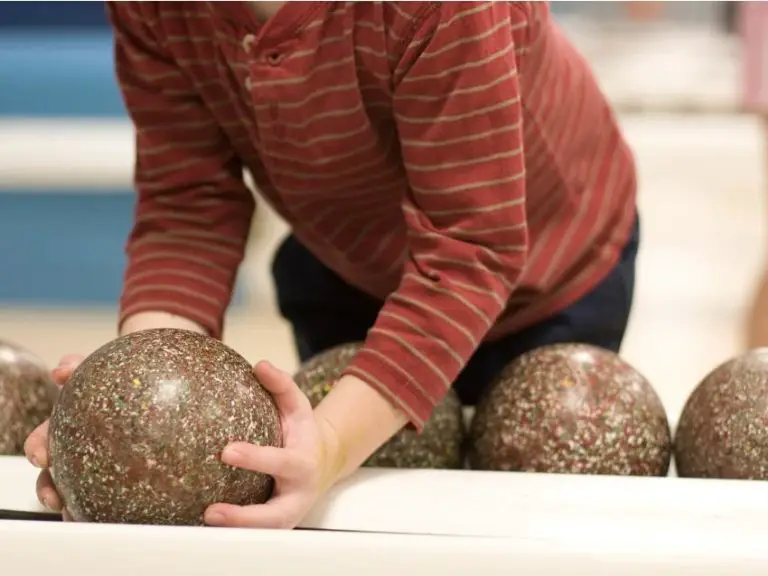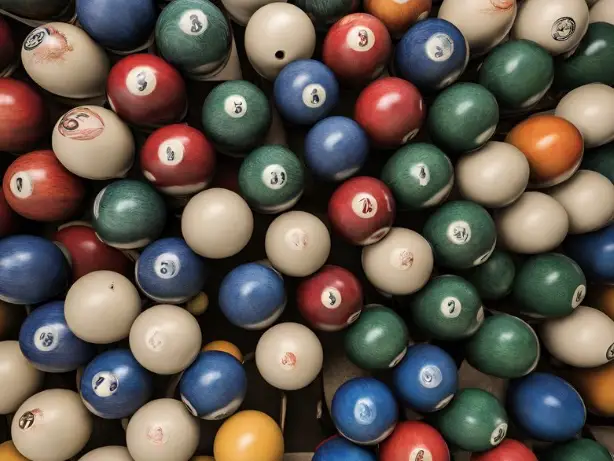Exploring the World of Professional Duckpin Bowling
Duckpin bowling is a variation of bowling that is played primarily in the northeastern United States. It is a unique sport that has been around for over 100 years, but it is not as well known as traditional ten-pin bowling. Many people are not aware that there are professional duckpin bowlers who compete in tournaments for cash prizes.
The history of duckpin bowling dates back to the early 1900s when it was first played in Baltimore, Maryland. The game quickly spread to other parts of the country and became popular in the northeastern United States. Today, duckpin bowling is still played in many parts of the country, but it is not as widely known as traditional ten-pin bowling.
Despite its relative obscurity, there is a professional duckpin bowling association with skilled and competitive players. The Duckpin Professional Bowlers Association (DPBA) is the organization that oversees professional duckpin bowling tournaments and rankings. According to their website, the DPBA Pro Tour consists of several stops across the United States.
Key Takeaways
- Duckpin bowling is a unique variation of traditional bowling that has been around for over 100 years.
- There is a professional duckpin bowling association that oversees tournaments and rankings for skilled and competitive players.
- The DPBA Pro Tour consists of several stops across the United States.
History of Duckpin Bowling
Duckpin bowling is a variation of ten-pin bowling that originated in the United States. It is a challenging and exciting game that has been enjoyed by millions of people for over a century. In this section, we will explore the history of duckpin bowling, including its origins, founders, and evolution.
Origins and Founders
Duckpin bowling was invented in Baltimore, Maryland, in the late 19th century. The game was created by a group of local bowling alley owners who were looking for a way to attract more customers. They wanted to create a game that was more challenging and required more skill than traditional ten-pin bowling.
The founders of duckpin bowling are often credited as John McGraw, the legendary manager of the Baltimore Orioles baseball team, and Wilbert Robinson, a former catcher for the team. McGraw and Robinson were regulars at a local bowling alley and were instrumental in promoting the game to a wider audience.
Evolution of the Game
Duckpin bowling quickly became popular in Baltimore and spread to other cities along the East Coast. In 1927, the National Duckpin Bowling Congress (NDBC) was formed to regulate the sport and establish rules and standards for competition. The NDBC has since become the governing body for duckpin bowling in the United States.
Over the years, duckpin bowling has evolved to include new technologies and techniques. Today, modern bowling alleys use computerized scoring systems and synthetic lanes to provide a more consistent and enjoyable experience for players.
Despite these changes, the basic rules and principles of duckpin bowling have remained the same, making it a beloved and timeless game for players of all ages and skill levels.
Duckpin Bowling Today
Duckpin bowling is still played in some parts of the country, and there are still professional duckpin bowlers who compete in tournaments and leagues. The sport has a dedicated following, and its popularity is growing.
Current Leagues and Tournaments
The Duckpin Professional Bowlers Association (DPBA) is the premier organization for professional duckpin bowlers. The DPBA operates the Pop Whitten Pro Tour, which is the highest level of competition for duckpin bowlers.
The tour consists of several tournaments held throughout the year in different states, including Connecticut, Maryland, and Rhode Island. The DPBA also maintains a national ranking system, which ranks the top male and female duckpin bowlers in the country.
In addition to the professional tour, there are also many local leagues and tournaments for duckpin bowlers of all skill levels. These leagues and tournaments are a great way for bowlers to hone their skills and compete against other players in a friendly and supportive environment.
Duckpin Bowling Alleys
There are many bowling alleys across the country that offer duckpin bowling. These alleys are typically smaller than traditional bowling alleys and have shorter lanes. They also use smaller balls, which makes the game more challenging.
Some of the most popular duckpin bowling alleys include Highland Bowl in Connecticut and White Oak Duckpin Lanes (Facebook Page) in Maryland.
The game remains a fun and exciting sport for players of all ages and skill levels. Its small but dedicated following will hopefully keep it around for many more.
Professional Duckpin Bowlers
The sport has a professional league, the Duckpin Professional Bowlers Association (DPBA), which oversees professional duckpin bowling tournaments and rankings. The DPBA Pro Tour consists of several stops across the United States.
Notable Players
Over the years, there have been many notable professional duckpin bowlers who have made an impact on the sport. One such player is Nicholas Lloyd, who has won multiple DPBA titles and was inducted into the DPBA Hall of Fame in 2018. Another notable player is Don Dove, who has won over 15 DPBA titles and was inducted into the DPBA Hall of Fame in 1991.
Other notable players include Anastasi, Cook, Davis, DeAntoniis, Dietsch, Dix, Green, Hartman, Hill, Johnson, Kruger, Lowell, and Matheson. These players have all made significant contributions to the sport of duckpin bowling and have left their mark on the DPBA.
Hall of Fame Inductees
The DPBA Hall of Fame was established in 1962 to honor the greatest players in the history of the sport. Inductees are chosen based on their performance in DPBA tournaments and their contributions to the sport.
Some of the most notable DPBA Hall of Fame inductees include Nicholas Lloyd, who was inducted in 2018, and Don Dove, who was inducted in 1991. Other notable inductees include George Howard, who was inducted in 1963, and Jimmie Pritts, who was inducted in 1977.
Overall, the DPBA Hall of Fame is a testament to the rich history and tradition of duckpin bowling. The players who have been inducted into the Hall of Fame have made significant contributions to the sport and have helped to make it the popular and exciting sport that it is today.
Technical Aspects of Duckpin Bowling
Equipment
Duckpin bowling is played with a unique set of equipment. The balls used in duckpin bowling are smaller and lighter than those used in traditional ten-pin bowling. They typically weigh between 3 pounds 6 ounces and 3 pounds 12 ounces and have a diameter of 4 3/4 inches to 5 inches.
The pins used in duckpin bowling are also smaller and squatter than those used in ten-pin bowling. They are about 9 3/8 inches tall and have a diameter of about 4 1/4 inches.
In addition to the balls and pins, duckpin bowling requires a pinsetter to reset the pins after each frame. The pinsetter is a machine that automatically clears the pins and sets them back up for the next frame. The use of a pinsetter eliminates the need for manual pin resetting, making the game faster and more efficient.
Rules and Scoring
The rules of duckpin bowling are similar to those of traditional ten-pin bowling, but there are a few key differences. In duckpin bowling, each player gets three rolls per frame instead of two. The player must knock down all ten pins in order to score a strike, and if they knock down all ten pins in two rolls, it is considered a spare.
Strikes and spares are scored just as in 10-pin. You get the extra points from the next 2 rolls after a strike, and the next single roll after a spare.
However, the third roll is treated differently. If you knock down the rest of the pins on your third roll, that’s known as a derby. It is scored as 10 points for the frame, but you don’t get any extra points from the next rolls. Open frames are treated the same way.
I cover scoring in this full separate post.
Final Comments
Duckpin bowling requires a combination of skill, talent, and power. Players must be able to accurately aim their balls to knock down the pins, while also having the strength to generate enough power to knock them down. The smaller size of the balls and pins makes duckpin bowling more challenging than traditional ten-pin bowling, requiring a higher level of precision and accuracy from the players.
It’s a fun and challenging variation of bowling that everyone should try at least once.






